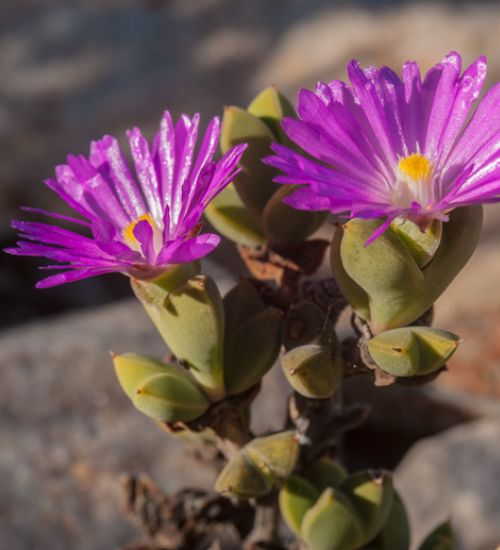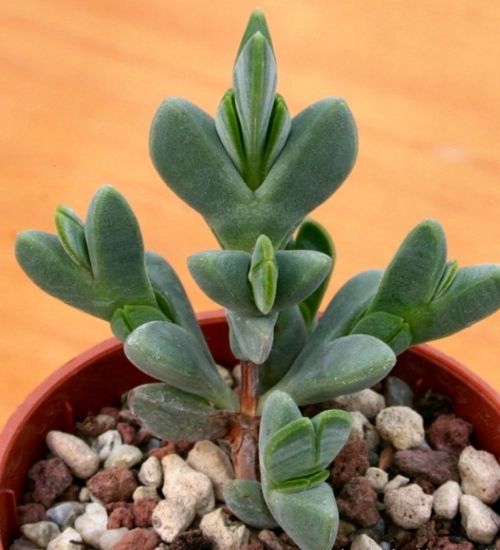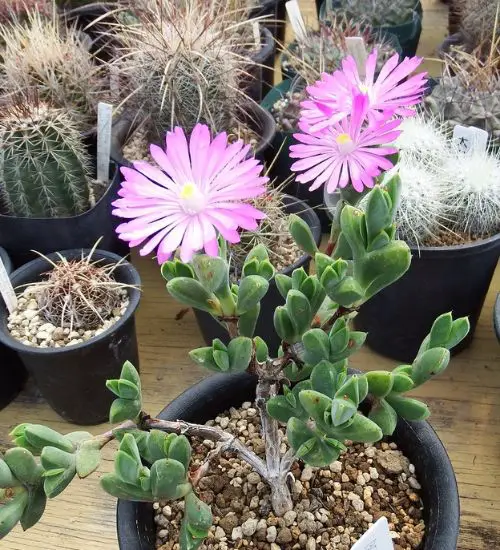Sun: Full sun to light shade
Water: Typical water needs for a succulent
Temperature: Zone 9a from 20° F to 25° F (-6.7 ° C to -3.9° C) to Zone 11b from 45° F to 50° F (7.2° C to 10° C)
Winter Survival: Cold hardy to 0°C
Propagation: cuttings, seeds
Flower: in late winter or early spring
Flower Type: pink, purple
Toxic: Unknown - Tell us
Dormant: summer
Space Requirement: Indoors & Outdoors
Common Problems: No major pests, Plants may rot if overwatered
Basc Care for Braunsia apiculata
Watering
You can water your succulent more than often in extreme conditions but make sure that the soil is completely dry before watering your succulent again.
One simple tip for you is that you can use some online apps to check the soil status before you go water your succulents. I would recommend the ThePlantsCheck app, it has some nice features there.
Fertilizing
Only feed this succulent during its active growing seasons which means Unknown - Tell us. Use the right fertilizer applied in the right amounts. Applying half-strength balanced fertilizer every month or so is recommended for optimal results.
Do not fertilize during summer as the plant is dormant.
Sun & Location Requirements for "Ice Plant"
When giving Braunsia apiculata its ideal environment, remember to provide it with full sun to light shade. This means that it should receive at least 6 hours of direct sunlight each day, with no more than 5 hours of shade during the hottest portions of the day.
Braunsia apiculata is a cold-hardy variety that can survive temperatures as low as 0°F. It has adapted to its environment by developing thick, succulent leaves and stems that are able to retain moisture in winter months. Its fleshy leaves also help protect the plant from extreme cold temperatures, allowing it to survive even the harshest cold conditions.
Any succulents in the group will need a medium space to grow. You can place your pot at your table or window. Since this plant needs more space than mini succulents, you should consider do not plant them together with other succulents/plants.
Braunsia apiculata also benefits from some indirect light throughout the day as well, so make sure you give it enough space to soak up light without becoming too exposed to heat.
Propagation
One way to propagate Braunsia apiculata is by cutting
Braunsia apiculata propagates easily from seeds, however it's important to look for healthy ones which are plump, dark in color and slightly sticky when touched. To start the propagation process, mix a soil mixture with well-draining potting mix then sow the seeds evenly and press them lightly into the surface. Finally, water the soil using a spray bottle and place it in bright but indirect light to ensure germination.
Toxicity

Pests and Diseases
Braunsia apiculata is not affected too much by common pests and diseases like most of the other succulents.


